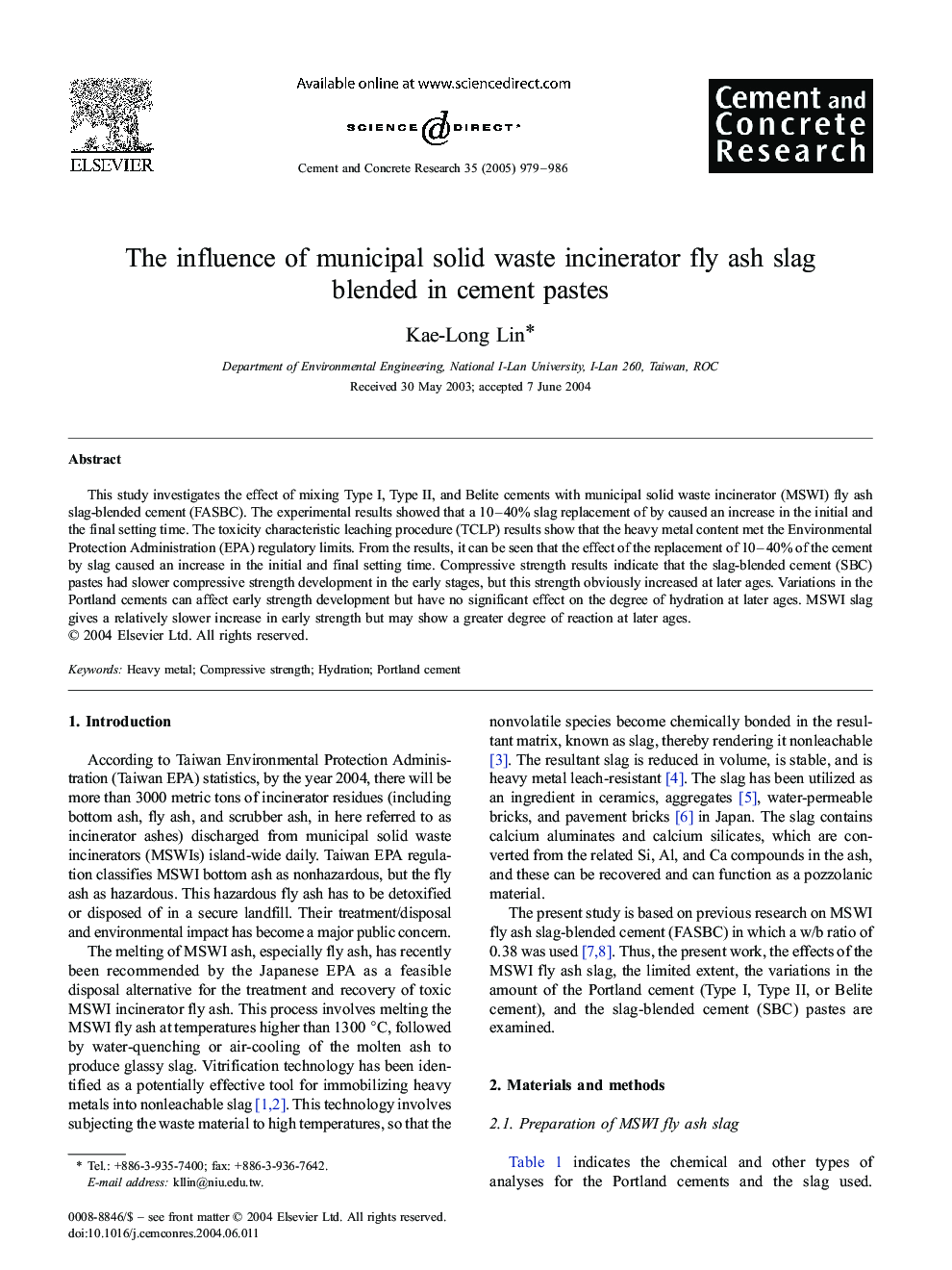| Article ID | Journal | Published Year | Pages | File Type |
|---|---|---|---|---|
| 10622691 | Cement and Concrete Research | 2005 | 8 Pages |
Abstract
This study investigates the effect of mixing Type I, Type II, and Belite cements with municipal solid waste incinerator (MSWI) fly ash slag-blended cement (FASBC). The experimental results showed that a 10-40% slag replacement of by caused an increase in the initial and the final setting time. The toxicity characteristic leaching procedure (TCLP) results show that the heavy metal content met the Environmental Protection Administration (EPA) regulatory limits. From the results, it can be seen that the effect of the replacement of 10-40% of the cement by slag caused an increase in the initial and final setting time. Compressive strength results indicate that the slag-blended cement (SBC) pastes had slower compressive strength development in the early stages, but this strength obviously increased at later ages. Variations in the Portland cements can affect early strength development but have no significant effect on the degree of hydration at later ages. MSWI slag gives a relatively slower increase in early strength but may show a greater degree of reaction at later ages.
Related Topics
Physical Sciences and Engineering
Engineering
Industrial and Manufacturing Engineering
Authors
Kae-Long Lin,
